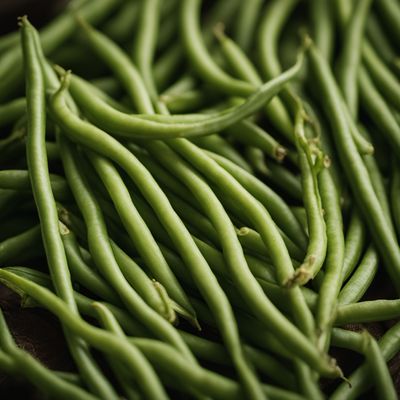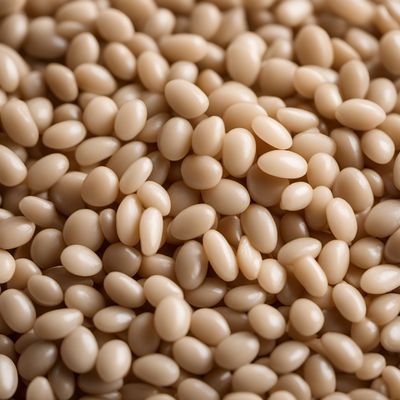
Ingredient
Jack beans (dry)
The Versatile Legume: Unveiling the Wonders of Jack Beans
Jack beans are large, kidney-shaped legumes that are typically dried for storage and later use. They have a firm texture and a creamy white interior. With a mild, nutty flavor, these beans add depth and richness to a variety of dishes. Their size and shape make them ideal for soups, stews, curries, and even as a meat substitute in vegetarian recipes. When cooked, jack beans have a tender yet slightly firm texture, making them a delightful addition to both savory and sweet dishes.
Origins and history
Native to tropical regions of Central and South America, jack beans have a rich historical background. They have been cultivated for centuries and were an important food source for indigenous communities. These beans were introduced to other parts of the world during the era of European exploration and colonization. Today, they are widely grown in countries such as Brazil, India, Nigeria, and Indonesia.
Nutritional information
Jack beans are a nutritional powerhouse, packed with protein, dietary fiber, and essential minerals such as iron, magnesium, and potassium. They are also low in fat and cholesterol, making them a healthy addition to any diet.
Allergens
Jack beans are not commonly associated with allergens, making them a suitable choice for individuals with various dietary restrictions.
How to select
When selecting jack beans, look for dry beans that are uniform in size and free from cracks or insect damage. Avoid beans that appear discolored or have a musty odor. Opt for organic or locally sourced beans whenever possible to ensure the highest quality.
Storage recommendations
To maintain the freshness and quality of jack beans, store them in an airtight container in a cool, dry place. Properly stored, they can last for up to a year.
How to produce
Jack beans can be grown by amateur gardeners in warm climates. They require well-drained soil and full sun exposure. Sow the seeds directly in the garden after the last frost, spacing them about 6 inches apart. Regular watering and occasional fertilization will promote healthy growth. Harvest the beans when the pods turn brown and dry on the vine.
Preparation tips
Before cooking with jack beans, they should be soaked overnight to soften their texture and reduce cooking time. Rinse the soaked beans thoroughly and discard any discolored or damaged ones. To cook, simmer the beans in water or broth until tender, which usually takes about 45 minutes to 1 hour. Adding a pinch of salt or a bay leaf to the cooking liquid can enhance their flavor. Jack beans can be used in a variety of dishes, including soups, stews, salads, and even desserts like bean-based brownies or cookies.
Culinary uses
Jack beans are commonly used in traditional dishes from various cuisines. They are often added to hearty soups and stews, providing a creamy texture and a boost of protein. In vegetarian and vegan cooking, jack beans can be mashed and formed into patties for veggie burgers or used as a filling for tacos and burritos. They can also be ground into flour and used in baking recipes, adding a nutritious twist to bread, pancakes, and muffins.
Availability
Jack beans are commonly available in tropical regions, particularly in countries such as Brazil, India, Nigeria, and Indonesia.
More ingredients from this category » Browse all

Broad beans (dry)
Hearty and Nutritious: The Dried Legume Powerhouse

Lima beans (dry)
The Versatile Lima Beans

Yardlong beans (dry)
The Nutrient-Packed Legume: Yardlong Beans

Runner beans (dry)
The Versatile Legume: Exploring the World of Dry Runner Beans

Rice beans (dry)
The Versatile Powerhouse: Rice Beans

Borlotti or other common beans (dry)
The Versatile Dried Beans

Black eyed peas (dry)
The Lucky Legume

Soyabeans for consumption (dry)
The Versatile Legume

Stink beans (dry)
The Aromatic Delight: Stink Beans

Ervils (dry)
The Nutritional Powerhouse: Exploring the Versatility of Dry Ervils

Lablab beans (dry)
The Versatile Legume: Lablab Beans

Monantha vetches (dry)
The Versatile Monantha Vetches
